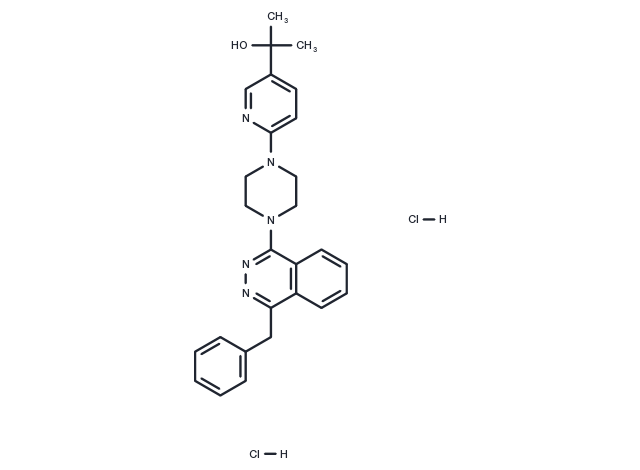Powder: -20°C for 3 years | In solvent: -80°C for 1 year


LEQ506 is an orally bioavailable small-molecule Smoothened antagonist. It also has a potential antineoplastic activity.

| Pack Size | Availability | Price/USD | Quantity |
|---|---|---|---|
| 100 mg | Inquiry | Inquiry | |
| 500 mg | Inquiry | Inquiry |
| Description | LEQ506 is an orally bioavailable small-molecule Smoothened antagonist. It also has a potential antineoplastic activity. |
| Synonyms | LEQ-506, LEQ-506 dihychloride, NPVLEQ 506, LEQ506, LEQ-506 HCl, LEQ 506 |
| Molecular Weight | 512.48 |
| Formula | C27H31Cl2N5O |
| CAS No. | T24400 |
Powder: -20°C for 3 years | In solvent: -80°C for 1 year
You can also refer to dose conversion for different animals. More
bottom
Please see Inhibitor Handling Instructions for more frequently ask questions. Topics include: how to prepare stock solutions, how to store products, and cautions on cell-based assays & animal experiments, etc.
LEQ-506 HCl (1204975-42-7 free base) T24400 NPVLEQ506 LEQ-506 LEQ-506 dihychloride NPVLEQ 506 LEQ506 NPVLEQ-506 1204975-42-7 LEQ-506 HCl LEQ 506 LEQ506 HCl (1204975427 free base) 1204975-42-7 free base LEQ 506 HCl (1204975 42 7 free base) inhibitor inhibit
